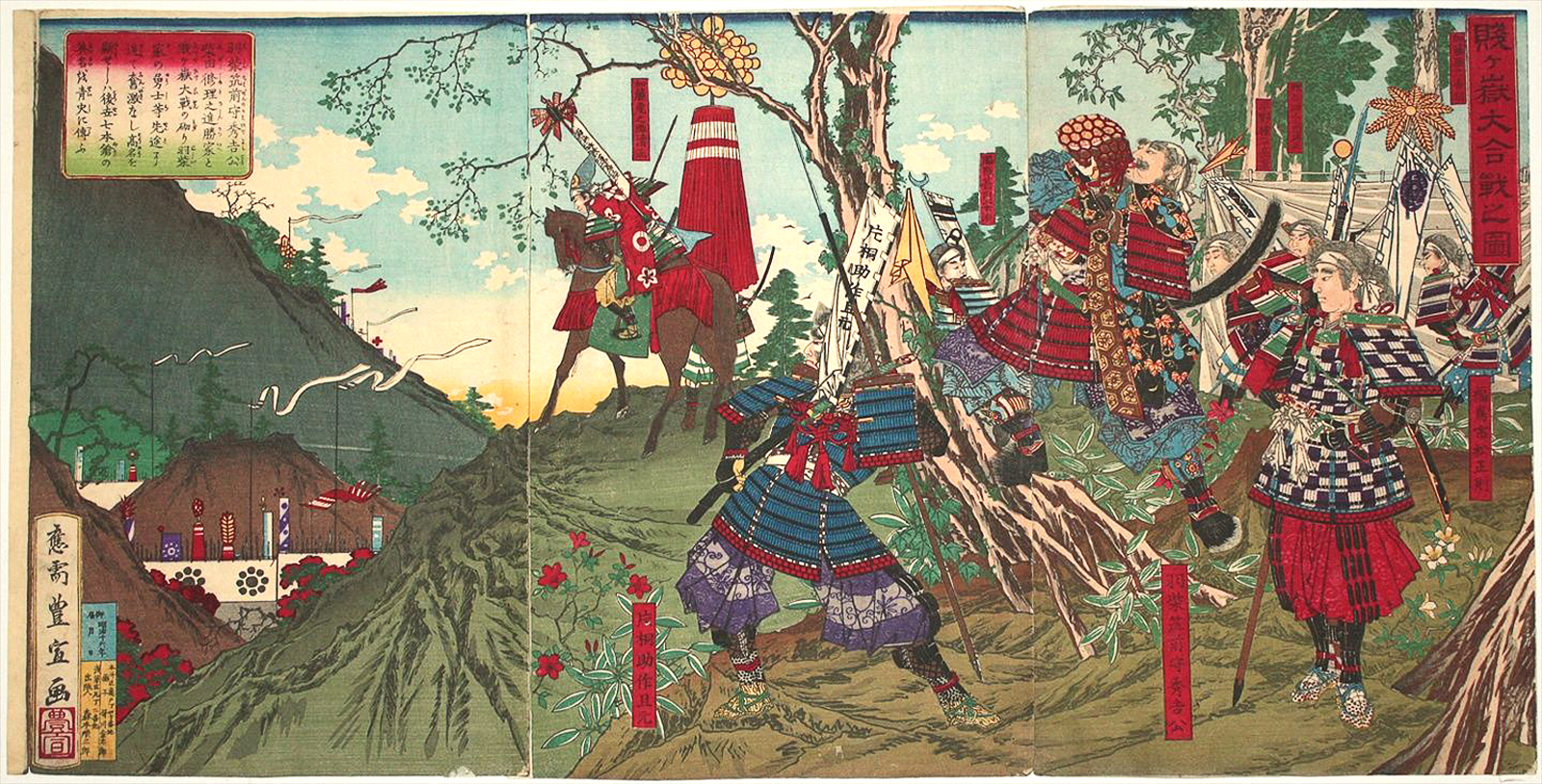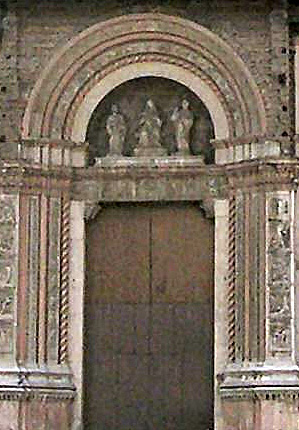|
Crucifixion With Saints (Annibale Carracci)
''Crucifixion with Saints'' or ''Crucifixion with Mourners and Saints Bernardino of Siena, Francis of Assisi and Petronius'' is a 1583 oil on canvas, now in the church of Santa Maria della Carità in Bologna. The work was originally sited in the Macchiavelli chapel in San Nicolò di San Felice, Bologna, next to Santa Maria della Carità, which was destroyed by bombing during the Second World War. It was then temporarily moved to the Soprintendenza di Bologna and finally to its current home. Dating In ''Felsina Pittrice'' in 1678, Carlo Cesare Malvasia stated that Carracci produced the work when he was eighteen (defining it as "the first work ever to come from the great Annibale's brush") and that the commission was initially offered to Ludovico Carracci, who decided the offered payment was too little and so passed it onto his young cousin Annibale. However, this account is unreliable, since cleaning in the 1920s revealed a date of 1583 on the canvas, at which point Annibale was t ... [...More Info...] [...Related Items...] OR: [Wikipedia] [Google] [Baidu] |
1583 Annibale Caracci, Crucifixion Santa Maria Della Carità, Bologna
__NOTOC__ Events January–June * January 18 – François, Duke of Anjou, attacks Antwerp. * February 4 – Gebhard Truchsess von Waldburg, newly converted to Calvinism, formally marries Agnes von Mansfeld-Eisleben, a former canoness of Gerresheim, while retaining his position as Archbishop-Elector of Cologne. * March 10 – The ''Queen Elizabeth's Men'' troupe of actors is ordered to be founded in England. * May – Battle of Shizugatake in Japan: Shibata Katsuie is defeated by Toyotomi Hideyoshi, who goes on to commence construction of Osaka Castle. * May 22 – Ernest of Bavaria is elected as Roman Catholic Archbishop of Cologne, in opposition to Gebhard Truchsess von Waldburg. The opposition rapidly turns into armed struggle, the Cologne War within the Electorate of Cologne, beginning with the Destruction of the Oberstift. July–December * July 25 – Cuncolim Revolt: The first documented battle of India's independenc ... [...More Info...] [...Related Items...] OR: [Wikipedia] [Google] [Baidu] |
Ercole Procaccini Il Vecchio
Ercole Procaccini the Elder (1520 – 1595) was an Italian painter of the Renaissance period, mainly active in Milan. He was born in Bologna. He painted an ''Annunciation'' for the church of San Benedetto, a ''Conversion of St. Paul'' and a ''Christ in the Garden'' for San Giacomo Maggiore, a ''St. Michael defeating the rebel Angels'' for San Bernardo, and a ''Deposition from the Cross'' for the church of Santo Stefano. Ercole established an academy at Milan, which became celebrated in his time, and, besides his own sons ( Carlo Antonio, Giulio Cesare and Camillo turned out distinguished artists of the Milan school. The painter Ercole Procaccini the Younger Ercole Procaccini il Giovane (''the Younger'') (c. 6 August 1605 – 14 November 1675 or 2 March 1680) was an Italian painter of the Baroque period. Born to a family of painters in Milan, he initially apprenticed with his father, painter Carlan ... was Carlo Antonio's son. References * 16th-century Itali ... [...More Info...] [...Related Items...] OR: [Wikipedia] [Google] [Baidu] |
Gabriele Paleotti
Gabriele Paleotti (4 October 1522 – 22 July 1597) was an Italian cardinal and Archbishop of Bologna. He was a significant figure in, and source about, the later sessions of the Council of Trent, and much later a candidate for the papacy in 1590, and is now mostly remembered for his ''De sacris et profanis imaginibus'' (1582), setting out the Counter-Reformation church's views on the proper role and content of art. Life Paleotti was born at Bologna. Having been awarded, in 1546, the title of Doctor of Civil and Canon Law (''utriusque iuris''), he was appointed to teach civil law. In 1549 he became a canon of the cathedral, but he did not become a priest until later. He gave up teaching in 1555, and although he had turned down office as a bishop, he became in 1556 "Auditor" or judge of the Roman Rota, then the supreme Catholic ecclesiastical court, moving to Rome. Pope Pius IV sent him to the Council of Trent, where he played an important role, as a mediator between reformers ... [...More Info...] [...Related Items...] OR: [Wikipedia] [Google] [Baidu] |
Agostino Carracci
Agostino Carracci (or Caracci) (16 August 1557 – 22 March 1602) was an Italian painter, printmaker, tapestry designer, and art teacher. He was, together with his brother, Annibale Carracci, and cousin, Ludovico Carracci, one of the founders of the Accademia degli Incamminati (Academy of the Progressives) in Bologna. This teaching academy promoted the Carracci emphasized drawing from life. It promoted progressive tendencies in art and was a reaction to the Mannerist distortion of anatomy and space.Agostino Carracci at Getty The academy helped propel painters of the School of Bologna to prominence. Life Agostino Carracci was born in |
Chiesa Di San Sebastiano (Venezia)
Chiesa (Italian, 'church') may refer to: People with the surname * Andrea Chiesa (born 1966), Swiss Formula One racer *Anthony della Chiesa (1394–1459), Italian Dominican friar * Bruno della Chiesa (born 1962), European linguist * Carlo Alberto Dalla Chiesa (1920-1982), Italian military leader *Deborah Chiesa (born 1996), Italian tennis player *Enrico Chiesa (born 1970), Italian footballer ** Federico Chiesa (born 1997), Italian footballer, son of Enrico Chiesa *Giacomo della Chiesa (1854-1922), Italian bishop, became Pope Benedict XV * Giulietto Chiesa (1940-2020), Italian journalist and politician * Giulio Chiesa (1928-2010), Italian pole vaulter *Gordon Chiesa, American basketball coach *Guido Chiesa (born 1959), Italian director and screenwriter *Jeffrey S. Chiesa (born 1965), U.S. Senator; American lawyer; former Attorney General of New Jersey * Laura Chiesa (born 1971), Italian fencer * Mario Chiesa (politician) (born c1938), Italian politician * Michael Chiesa (born 1987), ... [...More Info...] [...Related Items...] OR: [Wikipedia] [Google] [Baidu] |
Paolo Veronese
Paolo Caliari (152819 April 1588), known as Paolo Veronese ( , also , ), was an Italian Renaissance painter based in Venice, known for extremely large history paintings of religion and mythology, such as ''The Wedding at Cana'' (1563) and ''The Feast in the House of Levi'' (1573). Included with Titian, a generation older, and Tintoretto, a decade senior, Veronese is one of the "great trio that dominated Venetian painting of the ''cinquecento''" and the Late Renaissance in the 16th century.Rosand, 107 Known as a supreme colorist, and after an early period with Mannerism, Paolo Veronese developed a naturalist style of painting, influenced by Titian. His most famous works are elaborate narrative cycles, executed in a dramatic and colorful style, full of majestic architectural settings and glittering pageantry. His large paintings of biblical feasts, crowded with figures, painted for the refectories of monasteries in Venice and Verona are especially famous, and he was also the leadi ... [...More Info...] [...Related Items...] OR: [Wikipedia] [Google] [Baidu] |
Prospero Fontana
Prospero Fontana (1512–1597) was a Bolognese painter of late Renaissance and Mannerist art. He is perhaps best known for his frescoes and architectural detailing. The speed in which he completed paintings earned him commissions where he worked with other prominent artists of the period. He was a prominent figure in the city of Bologna, serving as official arbitrator in the business disputes of local artists. In his later career Fontana trained younger painters, including his own daughter Lavinia. Professional life Prospero Fontana was likely taught by Innocenzo da Imola, but there is a degree of uncertainty surrounding the relationship between the two men. As a teenager, Fontana was an assistant on Perino del Vaga's Palazzo Doria in Genoa. However, art historians cannot definitively identity Fontana's contributions to the decorations. In the 1550s, Fontana painted Pope Julius III's portrait and was pensioned at the pontifical court. He also decorated the Palazzo di Firenz ... [...More Info...] [...Related Items...] OR: [Wikipedia] [Google] [Baidu] |
Agostino Carracci, Crucifixion After Paolo Veronese
{{disambiguation ...
Agostino may refer to: * Agostino (name) * ''Agostino'' (film), an Italian film directed by Mauro Bolognini * ''Agostino'' (novel), a short novel by Alberto Moravia *, an Italian coaster See also * Agostini (other) * D'Agostino (other) *Augustino (other) Augustino is a masculine given name. Notable people with the name include: *Augustino de Cazalla (1510–1559), Spanish clergyman *Augustino Jadalla Wani, South Sudanese politician *Augustino Marial, Sudanese boxer *Augustino Masele (born 1966), ... [...More Info...] [...Related Items...] OR: [Wikipedia] [Google] [Baidu] |
Rachele (Michelangelo)
Rachele may refer to: People Given name * Rachele (given name), a feminine given name (including a list of people with the name) Surname *Josh Rachele (born 2003), Australian rules footballer *Sara Rachele (born 1988), American folk singer Other * 674 Rachele, a minor planet orbiting the Sun *Villa Rachele, a district of Cinisello Balsamo in Italy See also *Rachel (other) Rachel is the second wife of Jacob in the Hebrew Bible. Rachel may also refer to: People * Rachel (given name), a female name (including a list of people and characters with the name) * Rachel Bluwstein, a Hebrew-language poet often referred ... * Rachal (other) {{Disambiguation ... [...More Info...] [...Related Items...] OR: [Wikipedia] [Google] [Baidu] |
Basilica Di San Petronio
The Basilica of San Petronio is a minor basilica and church of the Archdiocese of Bologna located in Bologna, Emilia Romagna, northern Italy. It dominates Piazza Maggiore. The basilica is dedicated to the patron saint of the city, Saint Petronius, who was the bishop of Bologna in the fifth century. Construction began in 1390 and its main facade has remained unfinished since. The building was transferred from the city to the diocese in 1929; the basilica was finally consecrated in 1954. It has been the seat of the relics of Bologna's patron saint only since 2000; until then they were preserved in the Santo Stefano church of Bologna. History Construction In 1388, the ''Consiglio Generale dei Seicento'' prepared the construction of the church as a civic temple. To make room for the church, the adjacent Curia of Sancti Ambrosii was demolished, together with the majority of one of the city's burgs, including at least eight churches and towers. The first stone of construction was ... [...More Info...] [...Related Items...] OR: [Wikipedia] [Google] [Baidu] |




